Access Resource Kit (ARK) - Disability Services Commission
Access Resource Kit (ARK) - Disability Services Commission
Access Resource Kit (ARK) - Disability Services Commission
Create successful ePaper yourself
Turn your PDF publications into a flip-book with our unique Google optimized e-Paper software.
DESIGNING FOR ACCESS<br />
People With Sensory Disabilities<br />
People with sensory disabilities may have partial or complete loss of sight or<br />
hearing.<br />
Design considerations for people who may have partial or complete loss of sight include:<br />
• providing ways they can identify changes in direction, changes in level, hazards and<br />
obstacles such as projecting signs and windows;<br />
• the size, colour, luminance contrast, location, illumination and type of signs;<br />
• clear, even illumination levels in and around buildings so they are not dangerous and<br />
confusing;<br />
• planning so that a person who is unable to see will know whether a lift has arrived at<br />
the floor or whether it is going up or down; and<br />
• being aware that escalators can be difficult to use and that well-designed stairs or<br />
ramps are a useful alternative.<br />
Design considerations when designing facilities or services for people who are deaf<br />
or who have a hearing impairment include:<br />
• providing information that is both written and spoken in public buildings such as<br />
transport terminals and airports (for example voice announcements as well as visual<br />
display boards); and<br />
• providing an audio loop system or other appropriate hearing augmentation systems<br />
to assist people who use hearing aids in public places such as auditoriums and<br />
conference facilities.<br />
People with disabilities affecting communication and thought processes.<br />
People with a wide variety of disabilities including intellectual, cognitive and psychiatric<br />
disabilities, may have significant difficulty when it comes to asking for and understanding<br />
information. Clear information also assists children and people from culturally and<br />
linguistically diverse backgrounds.<br />
Design and service provision considerations when planning for people who are deaf or<br />
have a hearing impairment include:<br />
• need for clear signage;<br />
• clear pathways through a building;<br />
• provision of information with clear instructions;<br />
• service provision through personal assistance; and<br />
• well planned uncluttered environments.<br />
People with Disabilities and Planning for <strong>Access</strong> (Aust Standards updated February 2011)1.11



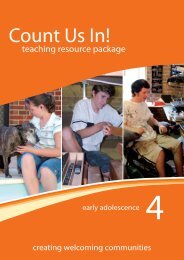
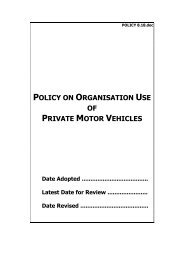
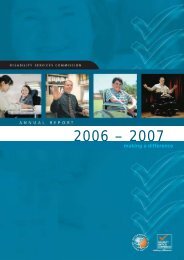


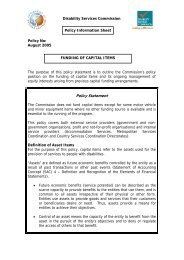
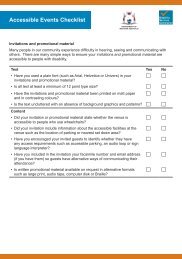
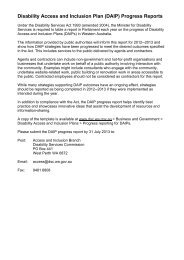
![Heerarka Adeegyada Naafada [PDF 102 kB] - Disability Services ...](https://img.yumpu.com/22096139/1/184x260/heerarka-adeegyada-naafada-pdf-102-kb-disability-services-.jpg?quality=85)
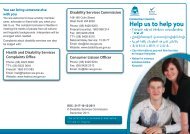
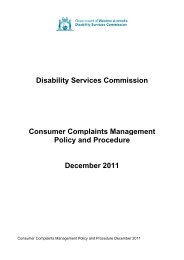

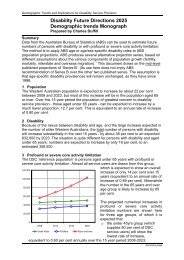

![معايير خدمات الإعاقة [PDF 297 kB] - Disability Services Commission](https://img.yumpu.com/22096120/1/184x260/-pdf-297-kb-disability-services-commission.jpg?quality=85)